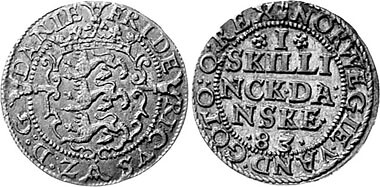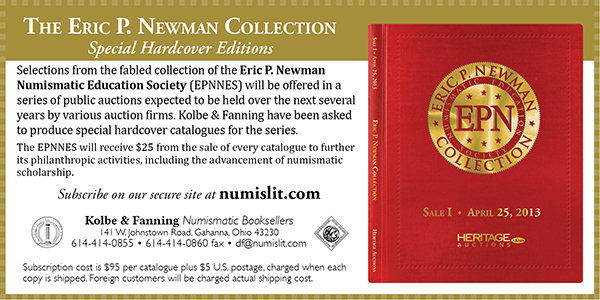
PREV ARTICLE
NEXT ARTICLE
FULL ISSUE
PREV FULL ISSUE
MAGICAL NUMISMATICS: THE SILVER SHILLING
Ursula Kampmann has a nice article in the May 9, 2013 CoinsWeekly titled Magical Numismatics: The Silver Shilling. Here's an excerpt. Be sure to read the complete article online.
-Editor
The fairy tale is called “The Silver Shilling” and begins as follows: “There was once a shilling, which came forth from the mint springing and shouting, ‘Hurrah! Now I am going out into the wide world.’ And truly it did go out into the wide world. The children held it with warm hands, the miser with a cold and convulsive grasp, and the old people turned it about, goodness knows how many times, while the young people soon allowed it to roll away from them.” The fairy tale, however, isn’t just concerned with such elementary wisdom, but the author deals with the intrinsic value of the piece of money as well: “The shilling was made of silver, it contained very little copper …”

Denmark. Pattern of 1 skilling 1809 At the time Hans Christian Andersen wrote his fairy tales, however, that was already obsolete. The Napoleonic Wars had made the Danish treasury almost go bankrupt. Until 1908, in Denmark, too, shillings – or skillings, respectively – weren’t made of silver anymore but of copper.

Denmark. 1 Skilling 1583 Thus, our old shilling Hans Christian Andersen refers to was a particularly good piece of money, a valuable one, of appropriate weight and fineness – unlike its successor, a coin without intrinsic value. But how dealt the 19th century with unknown coins? Roughly 100 before, it had been normal procedure that anyone could bring foreign currency to a mint that took it at material value at a small extra charge. In the 19th century, however, the production of coins had been centralized with only some major cities still having its own mint. In addition, states in all of Europe had begun to accept only their own currency or the currency of the countries they had formed a monetary union with, respectively. Consequently, he who intended to visit another country was forced to travel with local currency since his own, local money wasn’t accepted anywhere else. That made the number of different types of money circulating decline considerably – as a result, our shilling, which its owner had taken with him to another country only to get lost there – faced the frightening experience that no one in the entire country wanted to possess it. “That is not a genuine coin of the country,- it is false; it is good for nothing.” Such were the remarks our coin had to listen to from then on. To read the complete article, see: Magical Numismatics: The Silver Shilling (www.coinsweekly.com/en/Magical-Numismatics-The-Silver-Shilling/8?&id=292&type=a)

Wayne Homren, Editor The Numismatic Bibliomania Society is a non-profit organization promoting numismatic literature. See our web site at coinbooks.org. To submit items for publication in The E-Sylum, write to the Editor at this address: whomren@gmail.com To subscribe go to: https://my.binhost.com/lists/listinfo/esylum All Rights Reserved. NBS Home Page Contact the NBS webmaster 
|